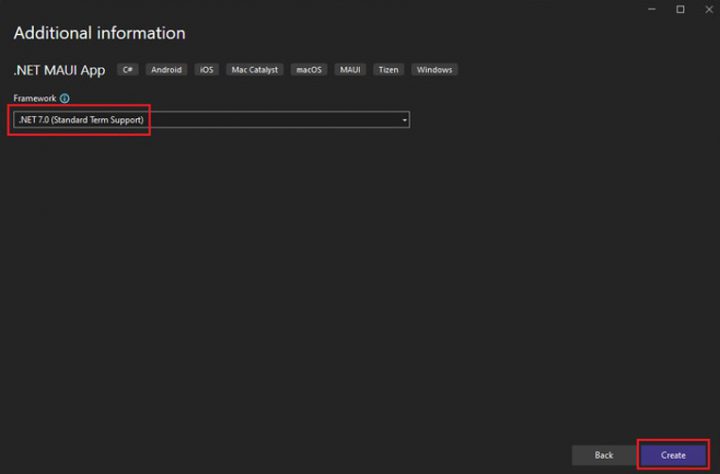Introduction
Microsoft’s .NET MAUI is an innovative open-source framework that empowers developers to create native cross-platform mobile and desktop applications using a single codebase. It extends the capabilities of Xamarin to deploy applications seamlessly across multiple platforms, including Android, iOS, macOS, and Windows with high code reusability. With its robust capabilities, developers can create dynamic user interfaces using a shared C# codebase and XAML markup that dynamically adjusts to different devices and screen sizes.
Features
- Cross-Platform Development: Creating software applications compatible with multiple operating systems or devices.
- Native Performance: Access native APIs for high performance and native look and feel.
- XAML-Based UI Development: Using familiar languages and tools to design and develop UI and business logic.
- Modern UI Controls and Layouts: Comprehensive set of modern UI controls and flexible layout options designed to create responsive and visually appealing applications.
- Cross-Platform APIs and Libraries: Utilizing shared libraries for common functionality across platforms.
- MVVM Pattern: A distinct division of responsibilities within an application helps facilitate its management, testing, and scalability.
- Hot Reload: Make live edits to your UI and code without restarting the app.
Create a New .NET MAUI App
- Open Visual Studio 2022
- Select the button “Create a new project”
- To create a new project, choose MAUI from the All-project types drop-down, select the.NET MAUI App template, and click the Next button.

- To create a new project, navigate to the Configure your new project window, enter MyFirstMauiApp as the project name, and click the Next button.

- Select.NET 7.0 (Standard Term Support) in the Framework drop-down in the Additional information window and click the Create button.

Project Structure
 Publish a .NET MAUI App for Windows
Publish a .NET MAUI App for Windows
- The target should be either a Windows Machine or a Framework>net7.0-windows.

- To publish a project, right-click on it in the Solution Explorer panel.

- To create app packages, go to the Create App Packages dialog, pick Sideloading, and select Next.

- Select “Select Signing Method” in the dialog and choose a certificate from various sources to create a temporary self-signed certificate for testing.

- To create a self-signed test certificate for your app, enter the company name and password for the certificate in the dialog box and confirm the password in the confirmation box.

- To publish, navigate the publishing profile drop-down and choose the desired option.

- The default options in the “Create a new MSIX Publish Profile” dialog should be the desired selection.

- The publishing profile you have created has been successfully selected.

- The dialog “Configure update settings” allows you to specify the app’s installer location and the frequency of updates it should check for.

- After clicking the “Create” button, the installer will be generated. A dialog “Finished creating package” pops up with a summary of your package.

Advantages
- Familiar programming language: .NET MAUI uses C# and XAML, familiar and powerful programming languages for many developers.
- Visual Studio integration: Seamless integration with Visual Studio, providing developers with robust tools for coding and debugging.
- Community and Support: Providing extensive resources, tutorials, and third-party libraries that enhance development and support for building cross-platform applications.
- Responsive: Enables the creation of responsive applications through adaptive layouts and controls that automatically adjust to different sizes and orientations.
- Control and Component Library: Includes a rich library of built-in controls and components enabling developers to build feature-rich, visually consistent, and interactive cross-platform applications with ease.
- Integrated debugging and testing: Integration with Visual Studio facilitating efficient and ensuring high-quality cross-platform applications.
.NET MAUI vs Xamarin
| .NET MAUI | Xamarin |
| The single project structure is a common approach to managing projects. | The platform utilizes distinct projects for each platform. |
| The platform-dependent files and code are stored in specific folders and filename targets like MainPage.android.cs and MainPage.ios.cs. | Platform-dependent files and code are stored under various projects. |
| .NET MAUI is a tool that integrates with the.NET CLI toolchain, enabling the creation, execution, and distribution of.NET applications. | .NET MAUI is a tool that integrates with the.NET CLI toolchain, facilitating the creation, execution, and distribution of.NET applications. |
| Resources can be managed in a single location. | Each platform requires separate maintenance of resource files. |
Conclusion
.NET MAUI(Multi-platform App UI) is a revolutionary tool for cross-platform app development, allowing developers to create native applications for multiple platforms using a single codebase. It offers a modern UI, access to native APIs, and a robust ecosystem of tools and libraries, enabling developers to create high-quality, responsive, and efficient apps.





